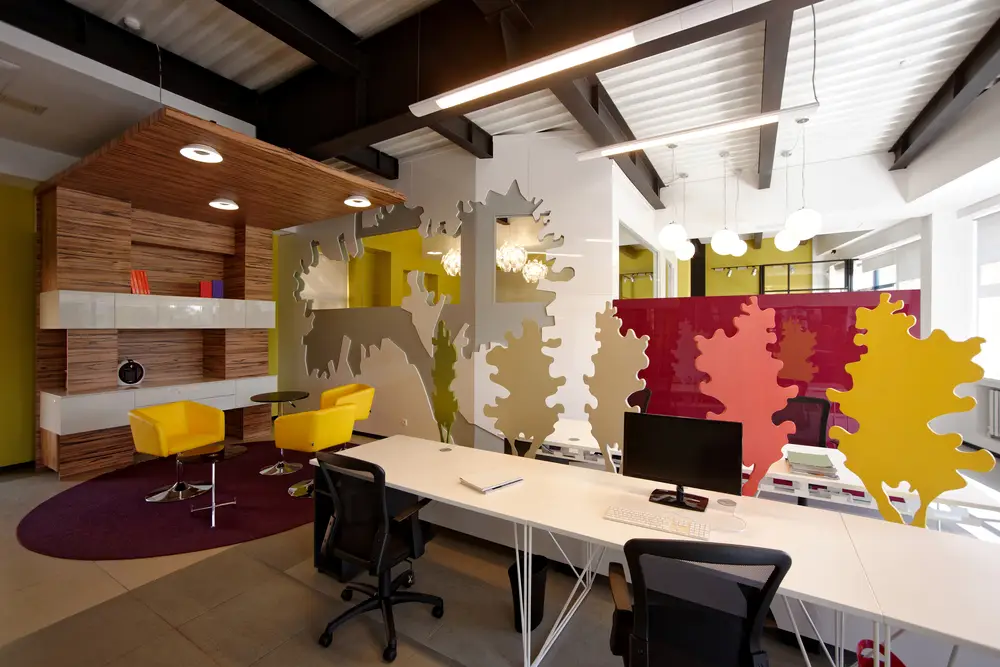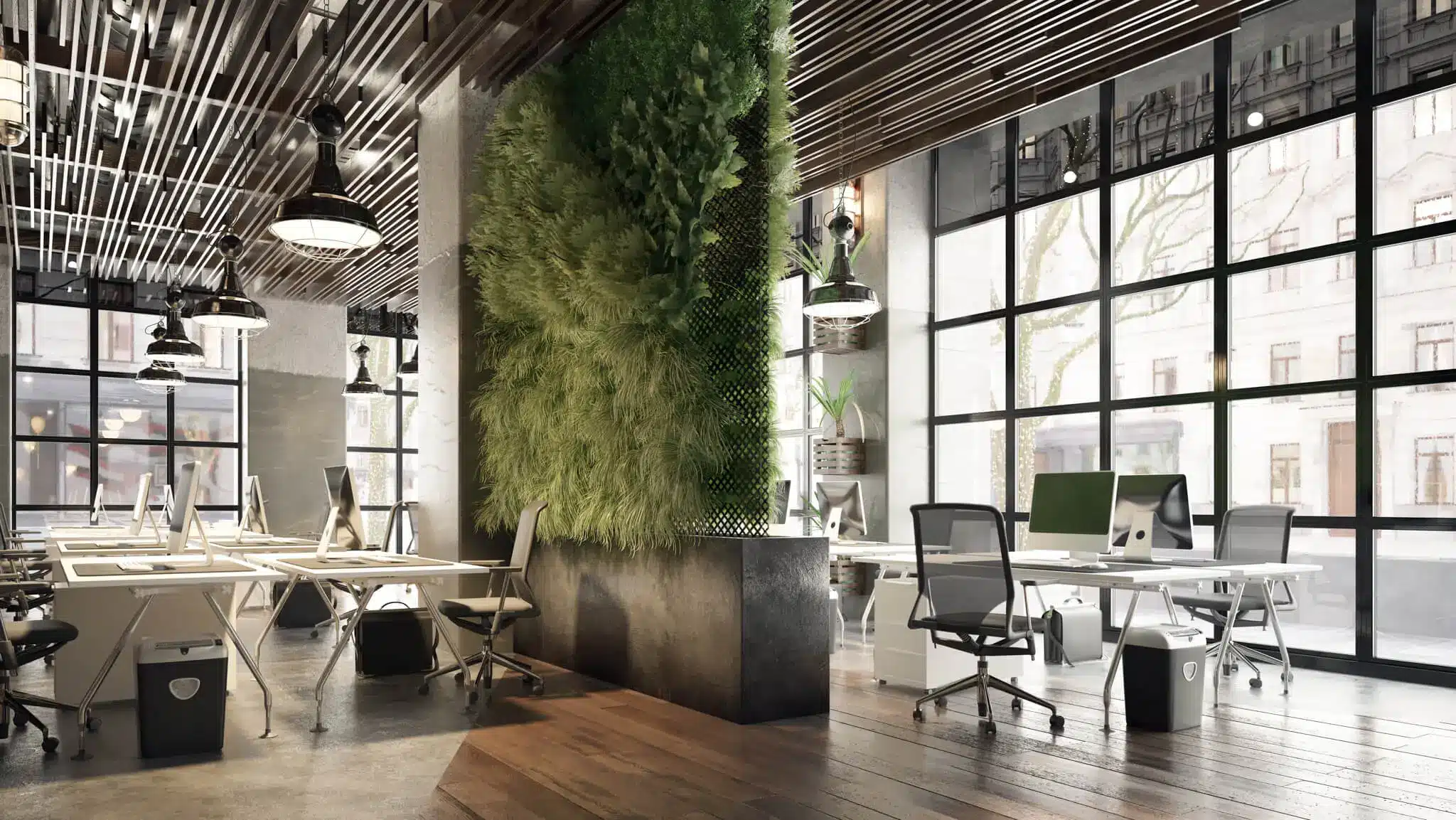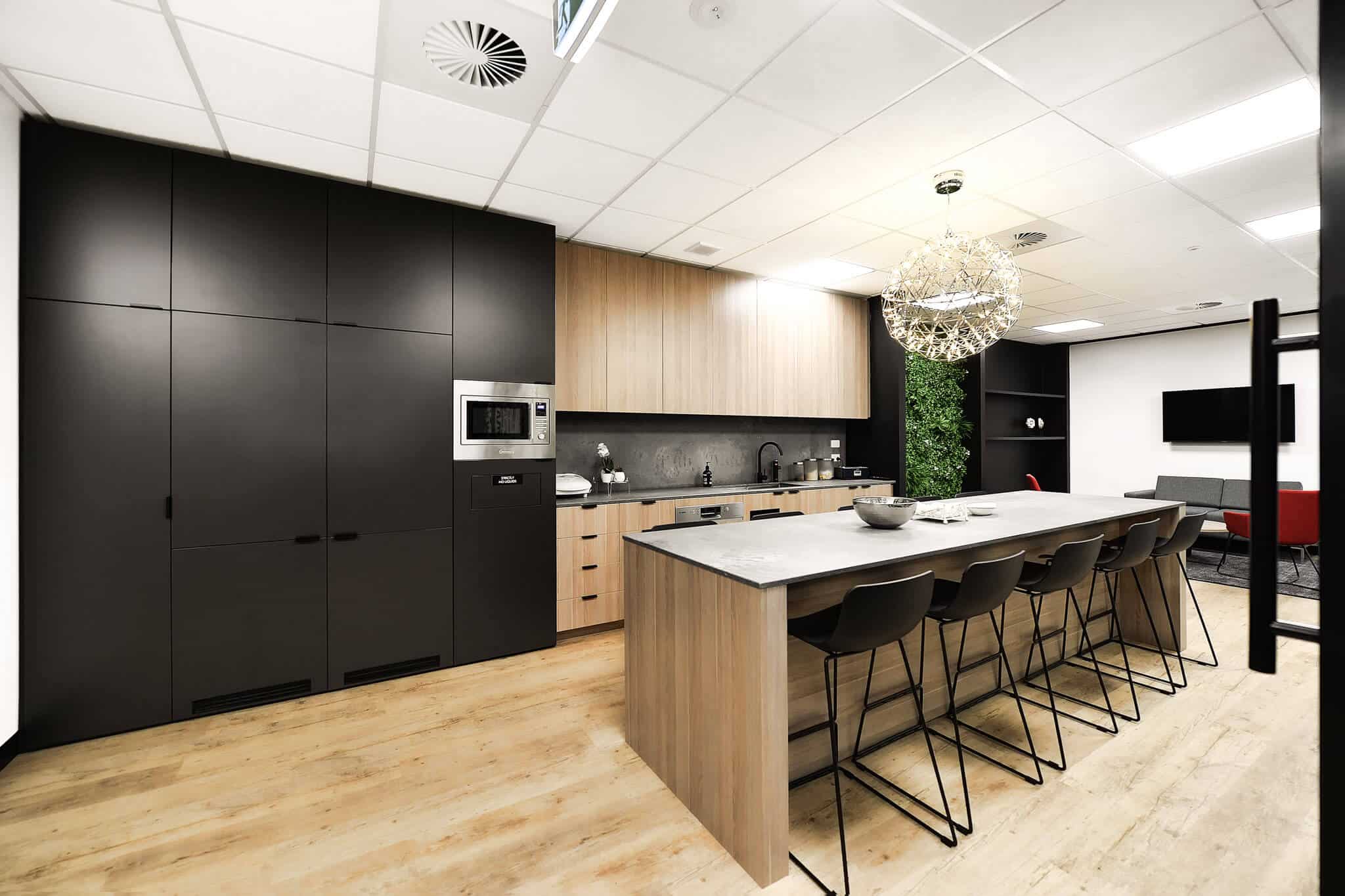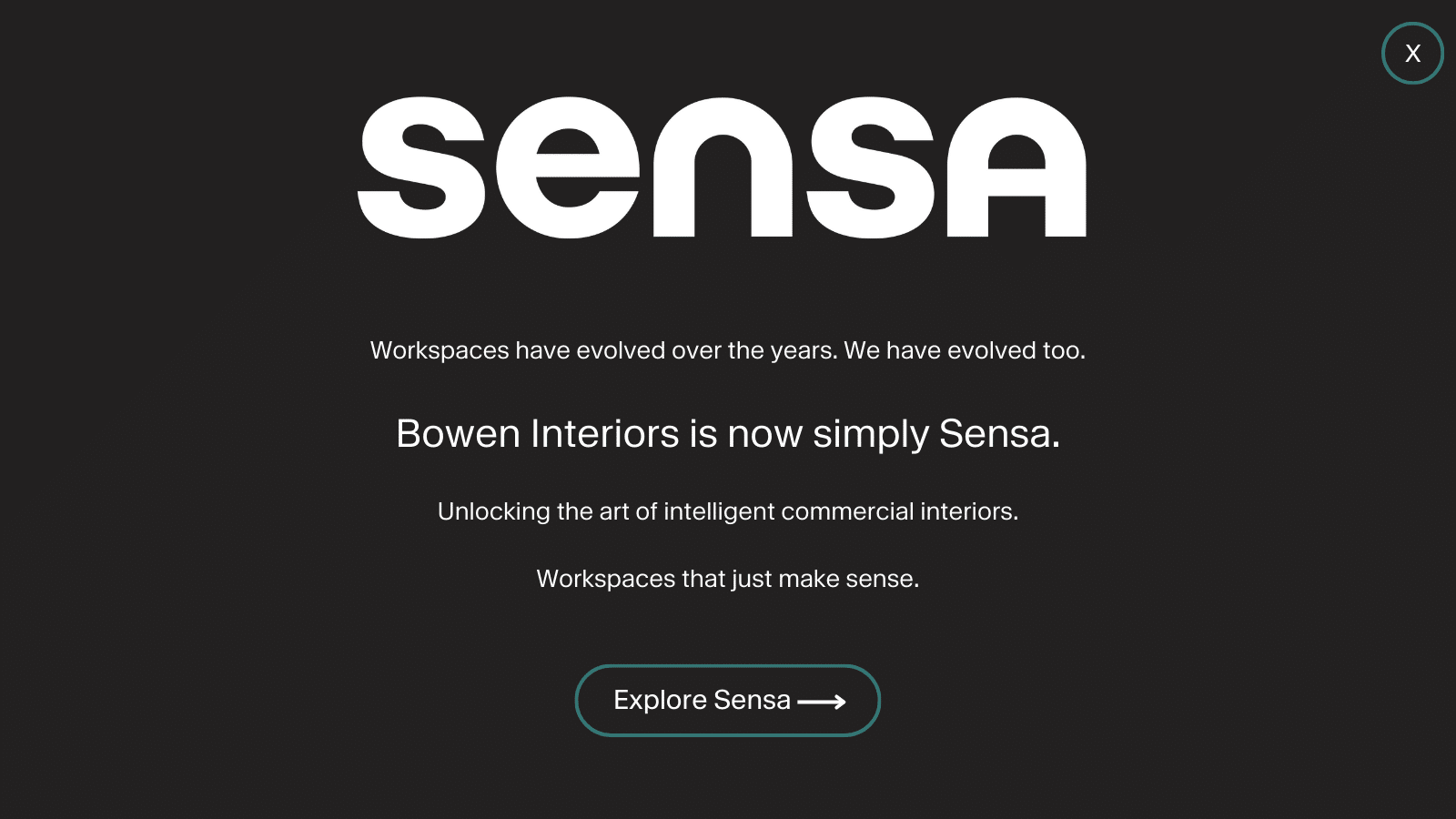When was the last time you walked into an office and thought, “this doesn’t feel like a workspace at all?”. It’ll probably take you some time to recall a memory like that, if at all. That’s because most commercial spaces have a cookie-cutter approach to design – neutral colours, standard cubicles, and white walls with motivational posters.
Yet, that doesn’t mean you have to conform to the norm. There are different ways to break free from this monotony and create a space that’s truly unique, inspiring, and reflective of your company’s culture. Below, we’ll give you the guide you need to eschew convention and embrace quirkiness in your office design.
What Are the Benefits of an Unconventional Office Design?
Unconventional office designs aren’t just about aesthetics. Sure, they’ll make your workspace look cool and modern, but that’s just the tip of the iceberg. They come with a host of benefits, and here are some of them:
Reflects Your Company Brand
If you step into an office with a bold, colourful mural on the wall and playful furniture scattered around, you’ll probably connect that company with creativity and innovation, right? Similarly, if you walk into an office with sleek, minimalistic furniture and a monochromatic colour scheme, you’ll imagine the company to be professional and streamlined.
The same concept applies to your office design. There will be a subconscious association between your company’s brand and the office space, so it’s important to choose a design that accurately reflects your brand’s personality. An unconventional design can go a long way in distinguishing your company from competitors and making a lasting impression on clients, visitors, and potential employees.
Creates a Desirable Workplace for Hybrid Workers
When it comes to working from home vs. working in the office, the competition is fierce. 65% of employees surveyed in a study reported that they’d prefer working remotely all the time, while just 32% would prefer a hybrid schedule. Accordingly, if you follow a hybrid model, your office should be a place that employees would want to return to.
Unconventional designs can make the workplace more fun, relaxing, and comfortable for hybrid workers. By incorporating elements like cosy lounge areas, standing desks, or even a designated nap room (yes, you read that right), you can create a “second home” feel for employees. The result? They won’t have to drag themselves to the office; they’ll be excited to come back.
Attracts and Retains Staff
Did you know that the presence of updated and personalised workspaces leads to a 10–15% increase in job satisfaction? By investing in your office design, you’re not only creating a happier workplace but also ensuring employee retention. That’s especially since one-third of the workforce today struggles with one real issue: finding workspaces that support their tasks and functions. Apart from that, 92% of employees consider innovative office design to be a crucial factor in company success, so when they’re applying for jobs, they’re also looking at the workplace design as a potential deal-breaker.
As such, whether your goal is to attract new talent or retain your current employees, an unconventional office design can be an asset. And in today’s competitive job market, you want to have all the advantages on your side.
Don't know how much your office fitout or renovation might cost?
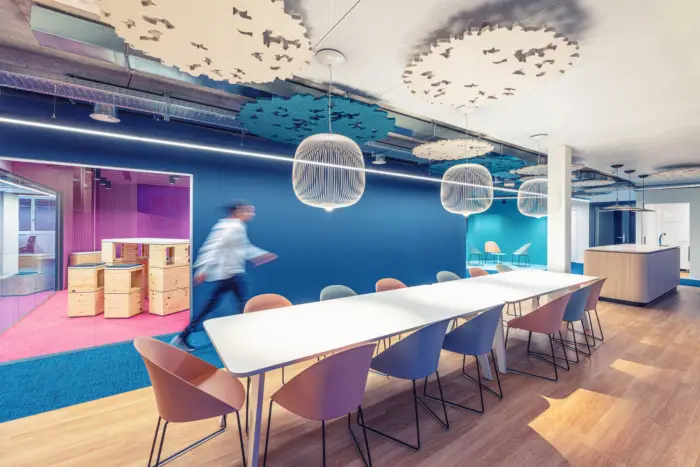
What Are the Elements That Can Create an Unconventional Office Space?
The term “unconventional” can mean different things to different people, and it spans a vast spectrum of possibilities. Here are ideas to get your creative juices flowing:
Bold Colour Palettes
Everyone is used to the traditional greys, whites and beiges that define most office spaces. While most office interior designs “play it safe”, don’t shy away from breaking the mould by going for a unique combination of bold colours. You can use colourful accent walls, furniture pieces, or even rugs to add a pop of colour to your workspace. This not only adds visual interest but also creates a fun and vibrant atmosphere.
As you choose the colours for your office design, keep in mind that different colours can evoke different moods and emotions. For example, red is known to increase energy and passion, while blue promotes calmness and productivity. Consider the type of work that will be done in each space and choose a colour palette that complements it. This is also known as colour psychology, and it can influence the overall ambience of your office space.
Pro Tip: The last thing you want is for the colours to be out of harmony, so be mindful of how different hues will work together in the same space. A simple way to do this is by using a colour wheel to guide your choices. Similarly, always keep your original brand colours in mind and incorporate them into the office design for consistency.
Upcycled Furniture
Another way to create an unconventional office space is by incorporating upcycled or repurposed items into the design. Of course, the main purpose out of this is to promote sustainability and reduce waste as a company. However, using old or unused furniture pieces can also add character and personality to your office design.
Some ideas for upcycled furniture include using old doors as desks or tables, turning wooden crates into storage units, repurposing vintage suitcases as seating or coffee tables, hanging old frames to display artwork, and so much more.
You won’t have to do this alone, as your interior designer can help come up with creative ways to incorporate these items into the design while maintaining a professional look. And because of the uniqueness of these items, it’s extremely difficult for someone to replicate your office design, making it truly one of a kind.
Personalised Workspaces
For the longest time, employees have been confined to traditional cubicles and plain, generic desks. And as if that wasn’t enough, these spaces were accompanied by strict rules on how to keep them tidy and organised, leaving no room for personalisation. Items like family photos, plants, and other personal items were often not allowed in these spaces.
However, with the rise of creative office designs, employees are now encouraged to personalise their workspaces to make them feel more comfortable and inspired. Accordingly, in unconventional office spaces, this should be a given. Here are some ways to allow your team to customise their space:
- Allow employees to bring in items from home such as photos, plants, or small decorations.
- Encourage employees to use unique desk accessories or stationery that reflect their personality.
- Provide a budget for employees to purchase new office supplies or decor that aligns with the overall office design.
- Allow employees to rearrange furniture or switch desks with their colleagues if they desire a change.
- Permit employees to choose their preferred lighting, temperature, and music while working.
These small changes may seem insignificant, but they can make a huge difference in employee satisfaction and productivity. By giving your team the freedom to personalise their workspace, you’re acknowledging their individuality and allowing them to feel more comfortable in their work environment.
Office Lease Due to expire?
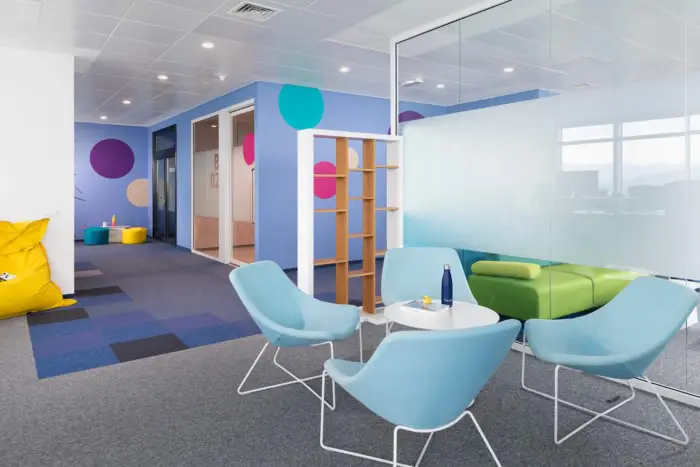
Flexible + Dynamic Spaces
Following up on the idea of traditional cubicles, private offices, and strict rules, this entire setup may seem mundane and uninspiring to many. This is where flexible and dynamic spaces come into play, offering a more unique and versatile approach to office design.
In these types of spaces, employees have the freedom to move around and choose their preferred “workspace” for the day. They can work in an open area with their team, retreat to a quiet corner for focused work, or even take their laptop to a comfy lounge area. With most jobs today being able to be done remotely or with minimal equipment, these kinds of dynamic, activity-based work zones give employees the option to work in a way that best suits them.
What’s more, this setup not only allows for more flexibility and comfort but also encourages collaboration and creativity. Breakout areas, communal spaces, and even outdoor workspaces can serve as great venues for less formal meetings and productive brainstorming sessions.
On your part, this will require interior design changes to incorporate various types of furniture, lighting, and technology to support these different workspaces. But the payoff could be significant in terms of employee satisfaction, engagement, and ultimately, business success.
Bringing Home Spaces into the Office
Whether your staff work at the office full-time or have the option to work remotely a few days of the week, incorporating home-inspired spaces can make a big difference in their overall comfort and well-being.
Everyone has experienced working from home at some point, and the freedom and flexibility it offers can be quite refreshing. Accordingly, by bringing elements of a home-like environment into the office, you’re providing your employees with a sense of familiarity and comfort that can boost their mood and productivity.
You don’t have to go all out and create a full-fledged living room or kitchen in your office (although that could be a fun idea!). Even simple changes like adding comfortable seating, plants, and warm lighting can make a significant impact on the overall ambience of the workplace.
Below are some other ideas for incorporating home-inspired spaces into your office:
- Having a rec room for employees to unwind and take a break from work.
- Creating a lounge area for casual meetings or individual work.
- Adding a bar or coffee station for employees to socialise and connect with each other.
- Setting up a nap room for those who want to recharge during the day.
- Designating an outdoor workspace for when the weather is nice and employees need some fresh air and sunshine.
Go beyond the traditional office layout and think about ways to make your workplace feel more like a home away from home. Remember, happy employees lead to a thriving and successful business!
9 Common Mistakes To Avoid on Your First Office Fitout
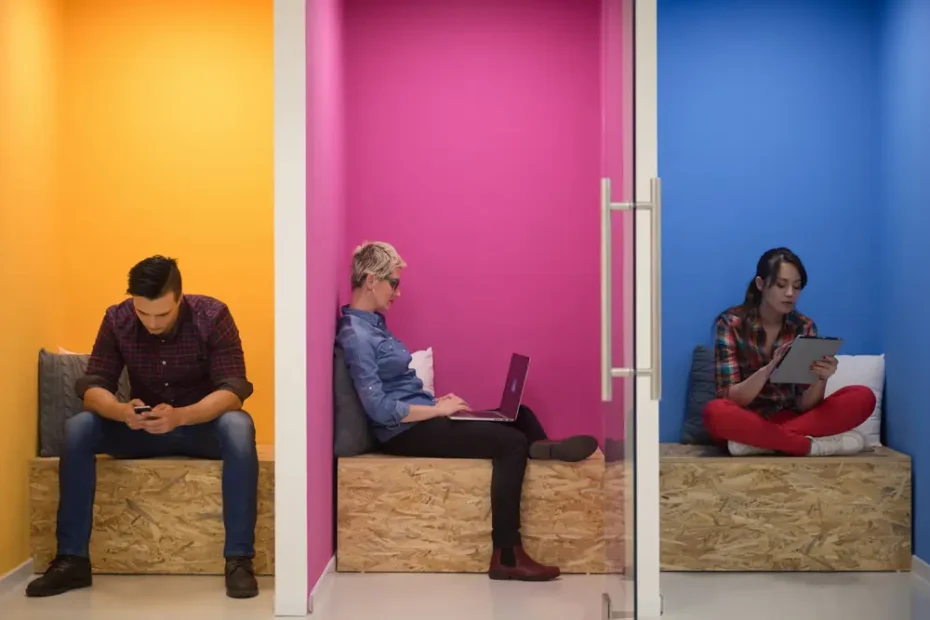
Non-Work Workspaces
Similar to the concept of home-inspired spaces, incorporating non-work workspaces into your office design can make your office feel less like a traditional, dull workspace and more like a place where work and everyday life intersect.
These non-work workspaces can include areas such as:
- Zen rooms, where employees can relax and meditate during breaks or when feeling overwhelmed.
- Mothering rooms for new mothers to nurse or pump milk in a private and comfortable space.
- Game rooms for employees to play games and unwind during their free time.
- Outdoor areas with picnic tables or benches for employees to enjoy lunch or have impromptu meetings.
The more you can create a variety of spaces for different purposes, the more you’ll foster a sense of community and work-life balance in your office.
Remember that the more employees feel that you’re invested in their well-being, the more motivated and engaged they will be in their work. This is why around 51% of employers with 50+ employees offer some type of wellness program or initiative to promote work-life balance.
Outdoor Workspaces
We’ve touched on outdoor spaces earlier, but it’s worth emphasising the benefits of incorporating them into your office design. Outdoor workspaces can include rooftop gardens, patio seating areas, or even an outdoor courtyard with a water feature.
These spaces not only give employees a change of scenery and fresh air but also allow for natural light to enter the office, boosting mood and productivity.
Even if the option for outdoor workspaces isn’t feasible for your office, there’s a concept called “bringing the outdoors in.” This can be achieved through large windows, plants and greenery scattered throughout the office, or natural-looking wall art, all of which can create a more calming and inviting work environment.
Research has shown that incorporating natural elements into the interior design of workspaces can improve employee well-being, reduce stress levels, and enhance creativity and problem-solving skills. Plus, it adds a touch of nature to an otherwise artificial environment.
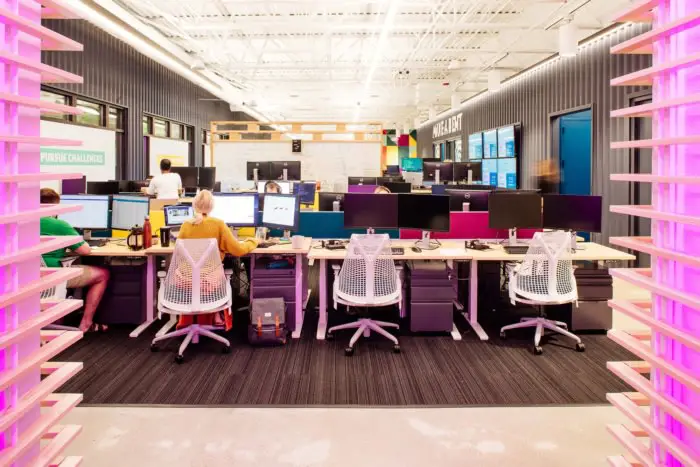
Embrace Themes
Finally, one fun and creative way to go about unconventional office design is to incorporate themes into your space.
Themes can be anything from a specific colour scheme, such as all white or pops of bright colours, to a particular style like vintage, boho, or modern. Similarly, you could opt for a theme that reflects your company’s values and mission.
Having a cohesive theme throughout the office can bring a sense of unity and cohesion to your team, making them feel more connected to each other and the company. It also adds a unique touch that sets your office apart from others.
Incorporating themes into office design doesn’t have to be expensive or complex; it can really be as simple as coordinating desk accessories or incorporating artwork that fits with the chosen theme. The key is to make sure the theme is consistent and present throughout the office.
Make an Unconventional Office Interior Design a Reality
Are you feeling inspired to revamp your office space now? We certainly hope so. Remember, an unconventional office design doesn’t have to be costly or complicated; it just requires some creativity and willingness to think outside the box. Once the intention is set, the possibilities are endless.
The next step is to choose your office fit out and interior design partner. At Bowen Interiors, we’re happy to be both. With hundreds of successful projects under our belt, we’ve mastered the art of unconventional office design, and we’re excited to bring our expertise to your project.
While you’re here, why not book an obligation-free consultation with us? Let’s discuss your ideas and how we can help turn them into a reality that ticks all the boxes for your business goals.
